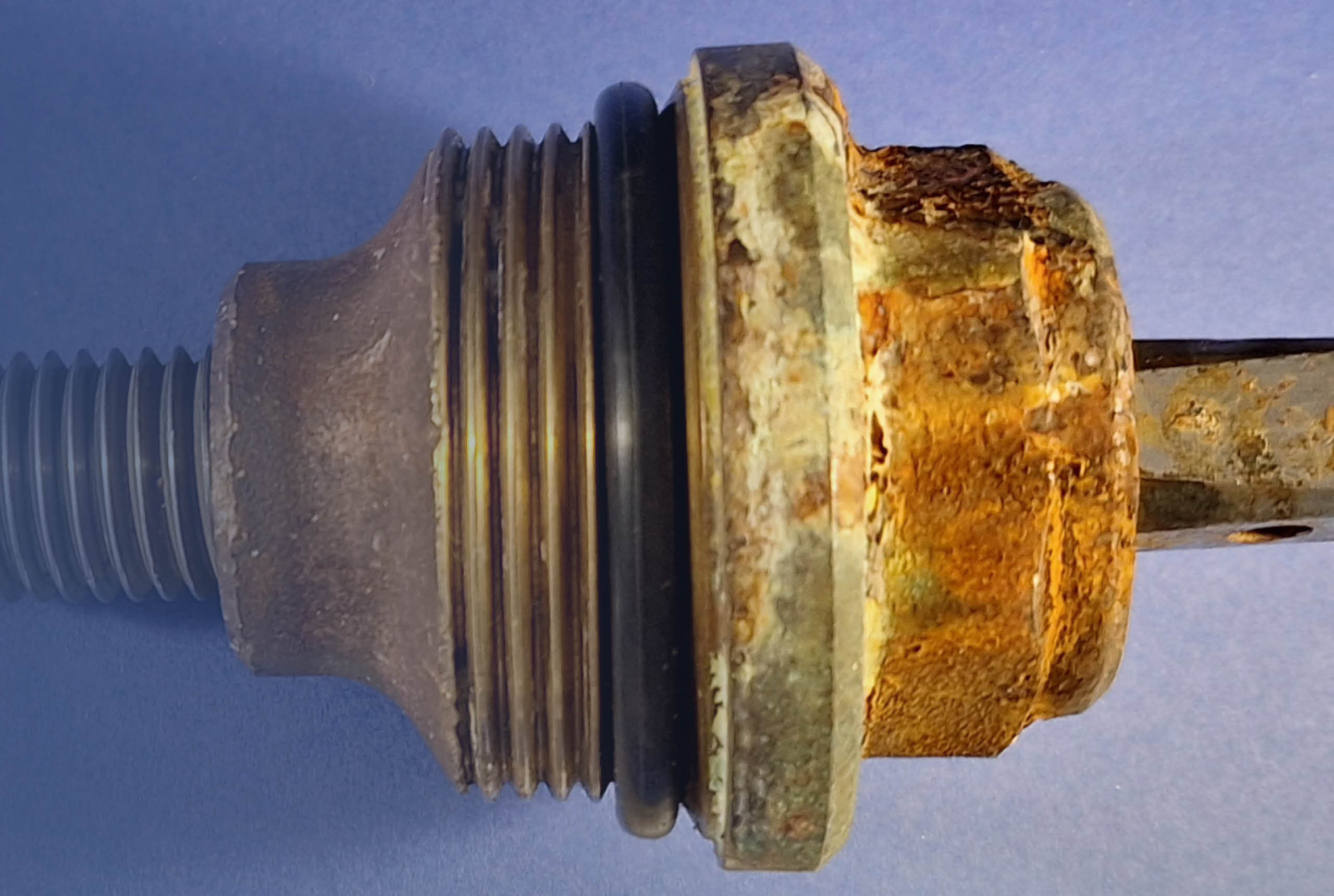
Surfaces & Coatings-ANALYTICS IN THE AREA
Corrosion Tests
Corrosion is a major economic problem and causes billions in damage every year. In addition, corrosion jeopardises public safety and also harms the quality of life, health and the environment. Damage caused by corrosion therefore has an economic, ecological and safety-related impact.
But what exactly is corrosion? In any case, it is far more than just a rusty nail or tarnished silver. Corrosion refers to complex processes that attack or destroy materials. The reactions that lead to corrosion can have very different causes.
It is important that materials are tested before use or installation in order to minimise the risk of corrosion damage and to ensure in advance that the material is suitable for the application.
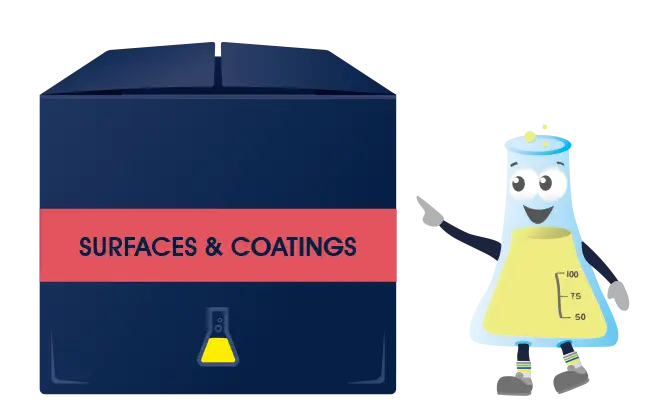
Our normal environment of air and humidity is often enough to cause unprotected materials to corrode. The corrosive attack begins on the surface of the material, i.e. at the point where the material comes into contact with the environment. This is where an interaction occurs between the material and the electrolyte film formed by the humidity in the air. Depending on the electrode potential, the metal goes into solution and is oxidised. The oxygen in the air absorbs electrodes and is reduced. The atmosphere therefore represents the corrosion load, corrosion products are formed from the material.
A warm and humid climate is also suitable for detecting hardness defects in steel. Within just 100 hours in the condensation water test, red rust forms on the carbide precipitates at the grain boundaries and indicates that hardening has not been optimised.
Atmospheric corrosion is an issue for all components that are exposed to the environment. Starting with cars, construction and agricultural machinery, wind turbines (especially offshore), tools and garden equipment.
Typical laboratory tests for testing susceptibility to atmospheric corrosion are:
Condensed water constant climate
Condensed water alternating climate
Climate storage
Alternating climate test
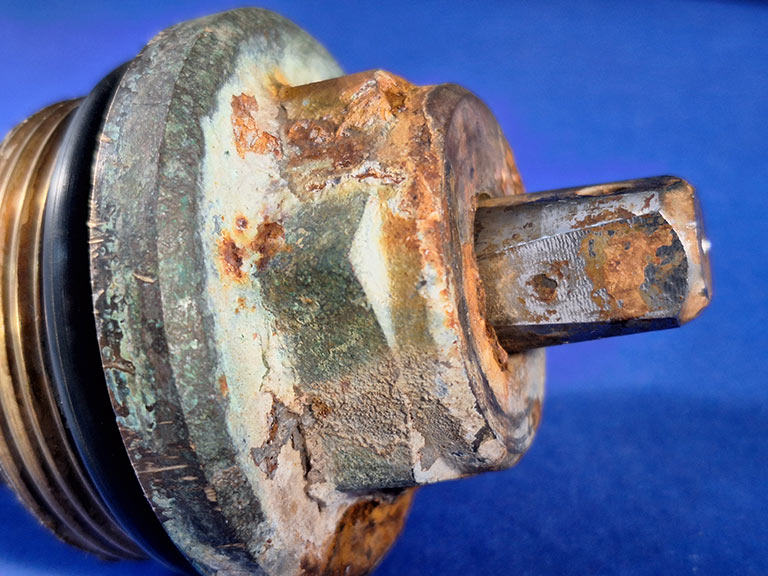
In addition to air and humidity, there are other factors that influence materials and substances in the environment. And even components that are exposed to the atmosphere of an industrial hall during installation are not only exposed to air and humidity.
Special forms of atmospheric corrosion are harmful gas tests. Exhaust fumes, agriculture, the resulting acid rain and so on cause pollution in the environment. The aggressor for the materials exposed to these stresses are nitrogen oxides and their compounds. Harmful gas tests are particularly relevant for components that are installed in the exhaust area of road traffic or in industrial halls, as well as for façade components made of aluminum or stainless steel.
The influence of dirt should also not be underestimated. Dirt is a composition of very different components: salt crystals, metal abrasion, organic particles and dust form an adhesive coating on surfaces. The components are activated by humidity and attack the surface of the components.
A special form of corrosive coating only occurs in winter. De-icing salt (calcium chloride) is spread to de-ice the roads. The slush mixed with the de-icing salt partially adheres to the car and dries. The salt mixture is activated by humidity and attacks the underlying surfaces. This mainly affects our cars and lorries, but also construction and agricultural machinery.
Typical laboratory tests for this type of exposure are:
Kesternich test (harmful gas)
Corrodkote test (dirt-imitating paste)
Russian Mud Test (calcium chloride de-icing salt)
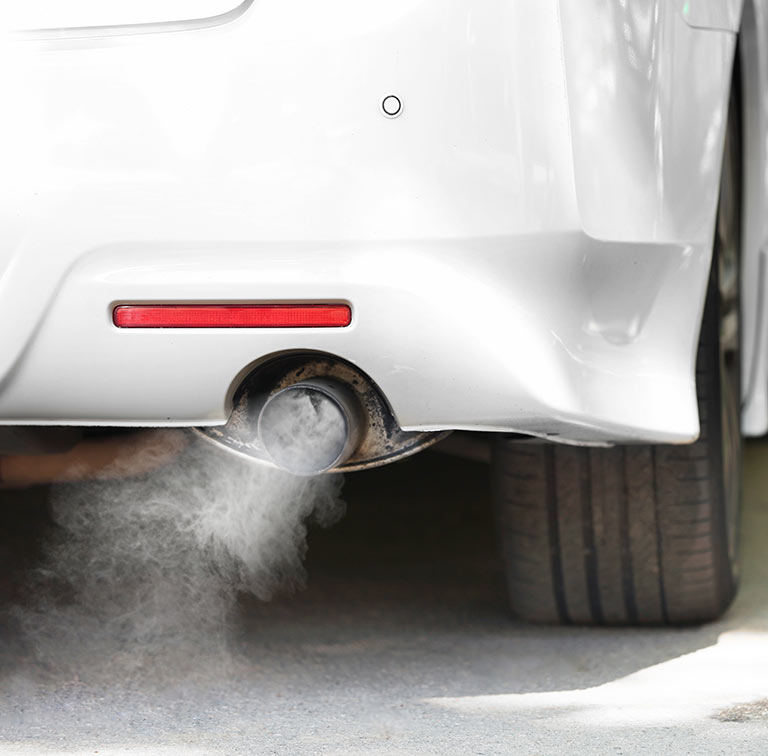
It can happen quickly that two different metals come into contact with each other - brass is fastened with a steel screw, a die-cast zinc holder runs in an aluminum rail. If an electrolyte in the form of moisture is then added, galvanic corrosion begins. The less noble metal in the electrochemical voltage series dissolves and is thus destroyed.
Galvanic corrosion is particularly serious in the area of sanitary installations. If different metals are combined in the system of water pipes or heating systems, the electrolyte present in the pipes in the form of water very quickly leads to severe corrosion attacks.
However, it is also important to consider contact corrosion on the outside of buildings, for example in awnings and conservatory construction. The profiles are often made of aluminum, while brackets and screws are usually made of zinc or galvanised steel.
Typical laboratory tests for testing susceptibility to atmospheric corrosion are:
Salt spray test
Alternating corrosion test
Climate change test
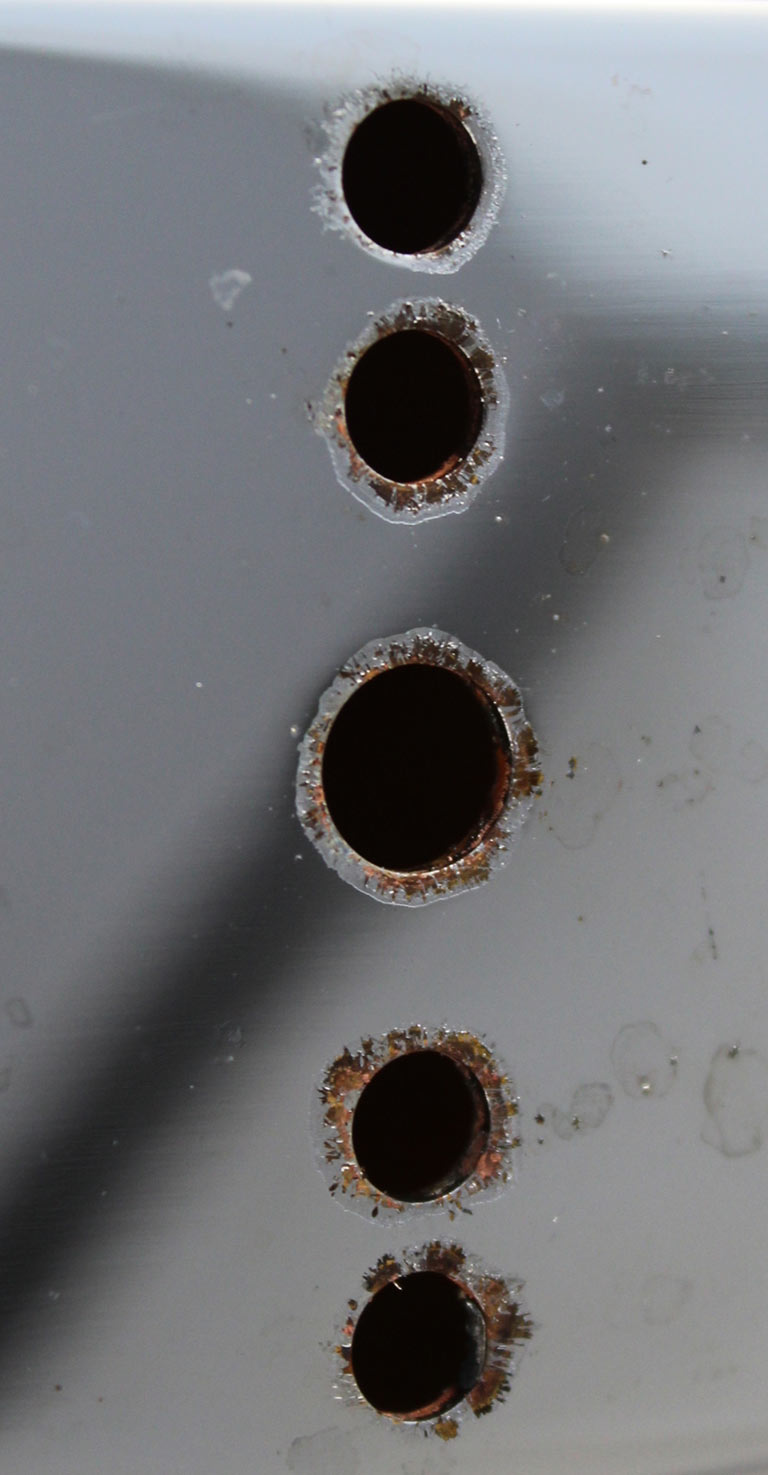
Some things simply cannot be avoided during installation, such as gaps caused by overlaps, non-continuous welded or joint seams and grouting. Due to its capillary forces, water is drawn into the smallest gaps and creates corrosive conditions.
If metals are joined together, gaps or cracks can form. Moisture is drawn into these due to the capillary forces of the water and creates highly corrosive conditions. The narrower a crack or crevice is, the lower the exchange between the medium in the crevice and the external environment. The differences in concentration between the medium in the gap and the environment cause a potential difference and lead to electrochemical corrosion. This takes place either in the gap (hydrogen type) or in the environment (oxygen type). The corrosion products formed in the gap take up space and quickly lead to progressive destruction of the materials. Screws and rivets can come loose and cause major damage.
We test whether assemblies are prone to crevice corrosion in the following tests:
Salt spray test
Corrosion change test
Climate change test
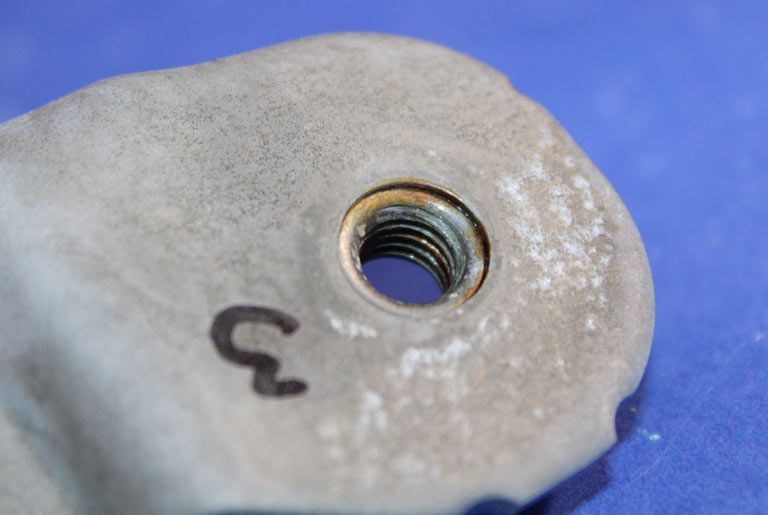
Intergranular corrosion describes the grain disintegration of metals. The corrosion attack takes place along the grain boundaries of the metallic structures and thus weakens the microstructure of the materials. In extreme cases, these become downright spongy from the inside and break apart without this being clearly recognisable from the outside.
Alloyed materials such as stainless steel or brass are affected. Suitable heat treatment can reduce the tendency to intergranular corrosion. In addition, the temperature of the welding metal must be critically monitored during processing steps such as welding.
We provide the following tests:
Ostrich test
Condensation water constant climate test
Salt spray test
Alternating corrosion test
Dezincification test for copper alloys

The prerequisite for stress corrosion cracking is met if internal or external tensile stresses are present in the component and corrosive media act on the component at the same time. The damage pattern is a deformation-free crack without visible corrosion effects. The cracks appear after a very short time.
Brass components in sanitary installations are particularly susceptible to stress corrosion cracking. Pipes and connecting pieces are tightened and often stressed due to installation. The installation situation often also provides the corrosive medium. Stress corrosion cracking can be avoided by stress relief annealing or by using materials that are resistant to stress corrosion cracking.
We provide the following tests:
Stress corrosion cracking resistance for brass alloys
Stress corrosion cracking for stainless steel
Strauss test
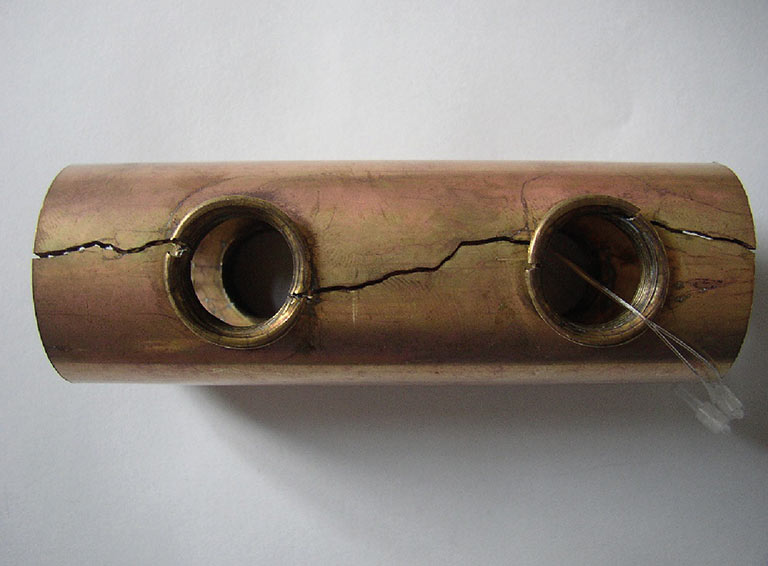
Corrosion can manifest in various forms and have different causes. For example, cleaning or maintaining surfaces can lead to changes, including attacks through deposit corrosion. We can use different methods to test your products for corrosion.
Light micoscopy
Climate Chamber
Abrasion tests
Scanning Elektron Microscopy
Media Resistance
Damage Analysis
For enquiries about these analyses, please contact our laboratory team at anfrage@industrial-lab.de or get in touch with your contact person:

Head of Laboratory
0212 22147 - 0
Send e-mail

Electroplating technician
0212 2214 - 75
Send e-mail

BSc Chemical Engineer
0212 22147 - 5
Send e-mail

phys. Technical Assistant Metallography
0212 2214 - 75
Send e-mail
The Strauß test is a test method for high-alloy steels with regard to resistance to intercrystalline corrosion. This type of corrosion is particularly insidious because it takes place inside the material along the grain boundaries and is therefore only noticed when the destruction is already advanced. The Strauß test is used to provoke this form of corrosion. The sample is placed in a boiling acid solution and then bent. If intercrystalline corrosion occurs, cracks form.
In alloys, different elements are mixed in a melt in order to improve the material properties of the alloy material. When the melt solidifies, the microstructure is formed from different phases and solid solutions. This can cause internal stresses. If corrosive media then act on the material, cracking with inter- or transcrystalline cracks can occur. This is known as stress corrosion cracking. The risk of stress corrosion cracking can be avoided or reduced by a suitable heat treatment that relieves the internal stresses in the material.